I have documented my api using Swashbuckle.AspNetCore.Swagger and I want to test some resources that have Authorize attribute on them using swagger ui.
api
using Microsoft.AspNetCore.Authorization;
using Microsoft.AspNetCore.Mvc;
using System.Linq;
namespace Api.Controllers
{
[Route("[controller]")]
[Authorize]
public class IdentityController : ControllerBase
{
[HttpGet]
public IActionResult Get()
{
return new JsonResult(from c in User.Claims select new { c.Type, c.Value });
}
}
}
Response code is Unauthorized 401, so how can I authorize this using swagger?
I have an Authorization server setup using IdentityServer4.
authorization server - startup.cs
services.AddIdentityServer()
.AddTemporarySigningCredential()
.AddInMemoryPersistedGrants()
.AddInMemoryIdentityResources(Config.GetIdentityResources())
.AddInMemoryApiResources(Config.GetApiResources())
.AddInMemoryClients(Config.GetClients())
.AddAspNetIdentity<ApplicationUser>();
authorization server - config.cs
public class Config
{
// scopes define the resources in your system
public static IEnumerable<IdentityResource> GetIdentityResources()
{
return new List<IdentityResource>
{
new IdentityResources.OpenId(),
new IdentityResources.Profile(),
};
}
public static IEnumerable<ApiResource> GetApiResources()
{
return new List<ApiResource>
{
new ApiResource("api1", "My API")
};
}
...
...
}
api - startup.cs
// This method gets called by the runtime. Use this method to configure the HTTP request pipeline.
public void Configure(IApplicationBuilder app, IHostingEnvironment env, ILoggerFactory loggerFactory,
ECommerceDbContext context)
{
loggerFactory.AddConsole(Configuration.GetSection("Logging"));
loggerFactory.AddDebug();
app.UseIdentityServerAuthentication(new IdentityServerAuthenticationOptions
{
Authority = "http://localhost:5000/",
RequireHttpsMetadata = false,
AutomaticAuthenticate = true,
ApiName = "api1"
});
// Enable middleware to serve generated Swagger as a JSON endpoint.
app.UseSwagger();
// Enable middleware to serve swagger-ui (HTML, JS, CSS etc.), specifying the Swagger JSON endpoint.
app.UseSwaggerUI(c =>
{
c.SwaggerEndpoint("/swagger/v1/swagger.json", "My API V1");
});
DbInitialiser.Init(context);
app.UseMvc();
}
I want an authorize button which redirects to a login screen and then grants access to api resources which the user has permissions for. Is it possible to use asp.net core 1.1 Swagger middleware to do this? Or do I need to write some javascript that gets a token from IdentityServer4 authorization server? Please help as I am new to authentication and authorization
